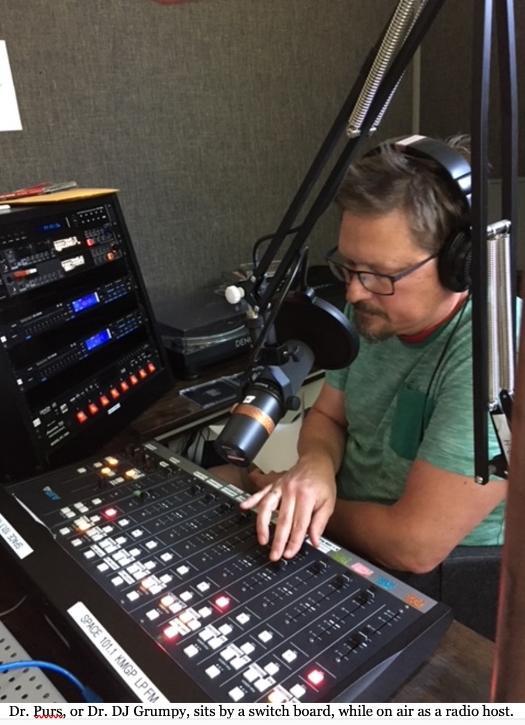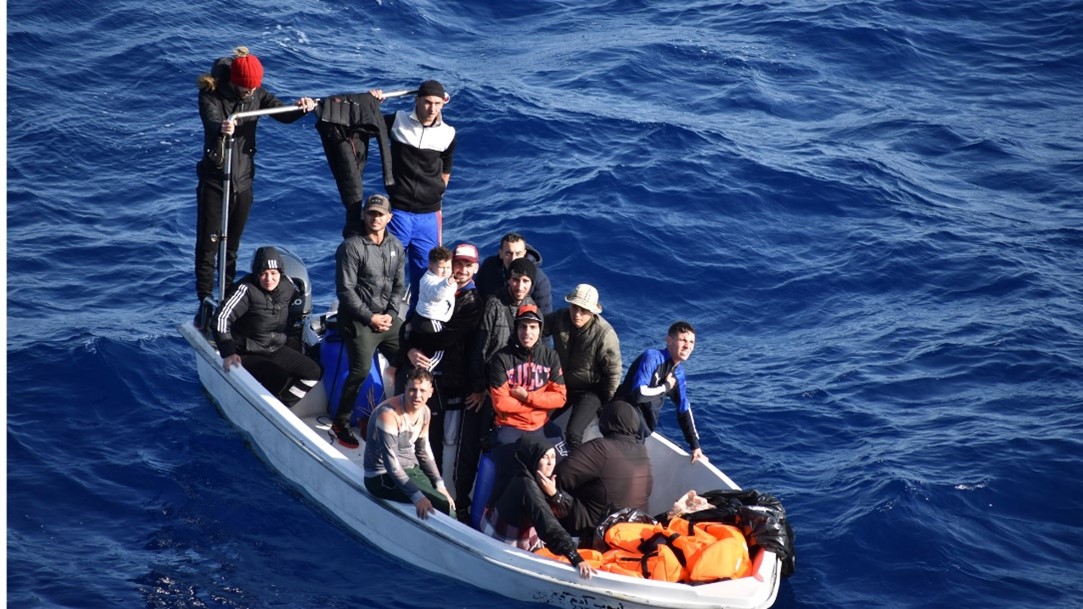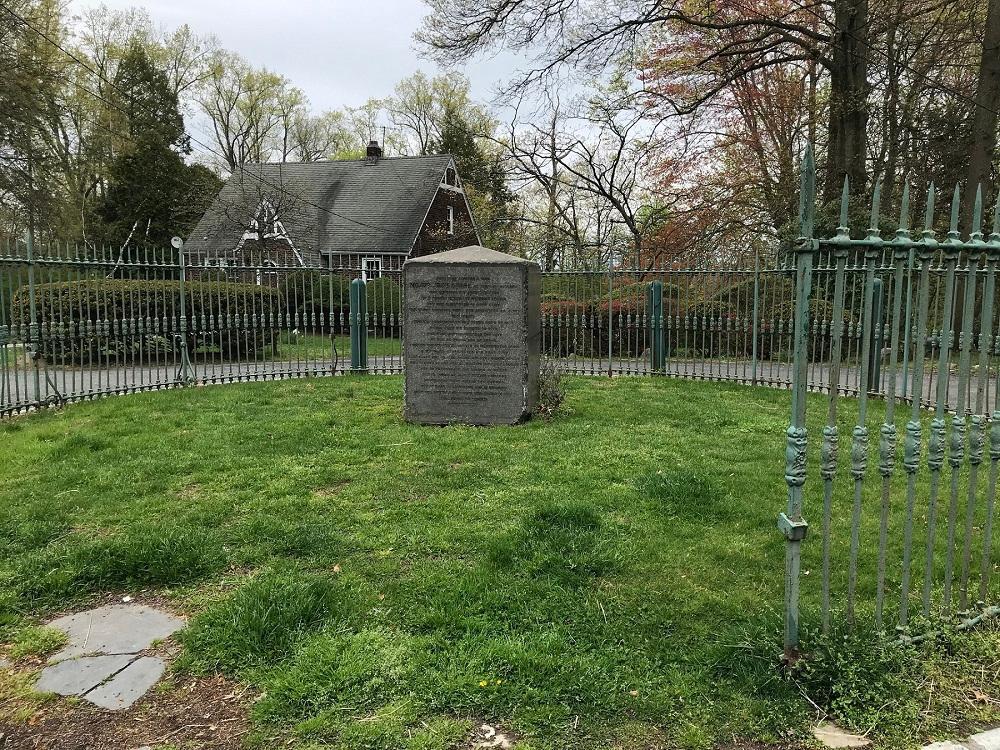Clio Speaks: History Today
Seattle University History faculty essays.
Clio Speaks is a regular column for the Seattle University History community, with essays authored by faculty and the affiliated, on a variety of topics related to their research and classes.
It is a space for musings informed by expert knowledge in all the areas that the History Department reaches. These informal essays offer personal perspectives on history and yield insights into the past, present, and future.
We hope you enjoy them.
An interview about archaeology with Claire Hood, '24
Dr. Randall Souza: This summer I was lucky to have two Seattle University students from the College of Arts and Sciences join me to participate in an archaeological excavation I co-direct in Sicily. Having previously taken classes on ancient Mediterranean history with me, these students joined the American Excavations at Morgantina: Agora Valley Project for the 2023 season. They learned and practiced proper excavation methodology on the site of an ancient public building, possibly a sanctuary, and also spent time with the post-excavation materials analysis, geospatial recording, ceramics analysis, and environmental analysis teams, all the while adapting to life in a rural town in central Sicily. Sadie Nelson interviewed one of the students, Claire Hood, about her experiences this summer, ranging from the city’s ancient history to its modern lifestyle and everything in between.
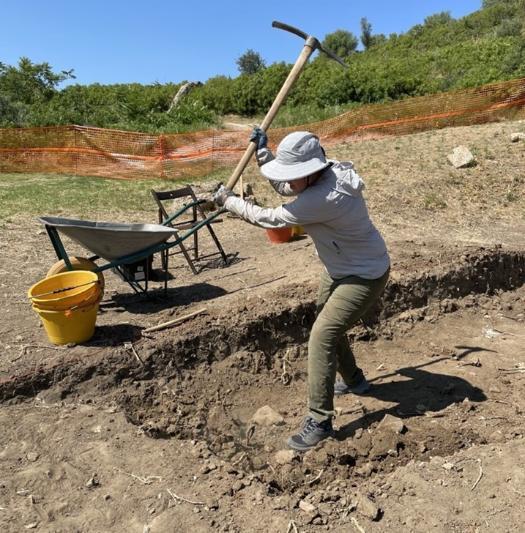 This interview has been edited for clarity.
This interview has been edited for clarity.
Sadie Nelson: What led you to want to go do archaeology for a summer? Did you have anxieties on the plane as you deboarded and stepped foot onto Sicily?
Claire Hood: It was my first time traveling alone, so that was a fun adventure to fly internationally for the first time alone and go to do archaeology. I've always been curious about human existence, and that's the draw for history and specifically archaeology, of comparing the ancient past to the present and how a lot of things influence one another.
SE: That's so fun; did you ever picture yourself going to do archaeology for a summer?
CH: I never imagined doing archaeology as a possibility for my summer, and it was an incredible experience to do something really far outside my comfort zone.
SE: What was the setup of the camp like?
CH: We were in a town called Aidone, and then we took a bus every morning. We were then driven to the site and then we spent the whole day at site, and we would dig from 7 a.m. to 5 p.m.
SE: Did you get sunburnt?
CH: No. I did not get sunburnt, which was impressive. I got a pretty bad farmer's tan when I wasn't wearing my sun shirt, and I definitely got used to wearing a goofy hat all summer.
SE: Was it really hot?
CH: Every day? Yeah. So, there was a record-setting heat wave called Cerberus, and that happened during Week 2. And so, it changed our digging schedule. We started digging at 6 a.m., until 2 p.m. so that we could beat the heat. And one day was really fascinating because there were wildfires and there was a wildfire on site. And so, there were firefighters, like, just over a hill putting out a fire. And we could see the smoke over the hill. And we were just digging at the site. And we could only dig at the site because the firefighters were there.
SE: That's crazy. What was that experience like? Were you scared at all? Plus, it's like an ancient site; were you nervous about destroying something by accident?
CH: I mean, there's always nerves when using like a large tool.
SE: What were the tools that you used?
CH: We used pickaxes, and large shovels. I'll show you a picture.
CH: We used pickaxes, and large shovels. I'll show you a picture.
Copy of the photo shown
SE: That’s like Minecraft, that's fire. You kind of look like a beekeeper.
CH: Yeah, that's my funny hat. So that's, that's my pickaxe.
SE: How did you use these tools? Would you just measure on the ground and then get to work?
CH: We wouldn't measure. The site supervisor determines where you dig. Then we would pickaxe through topsoil.
SE: What’s topsoil?
CH: Topsoil is the upper layers of dirt. The amount changes depending on where in the trench you are digging. Normally there were multiple inches. Probably there were some areas where the trench was like 3 feet deep, and in other areas where the trench was like 6 inches deep, depending on how much topsoil there was and where the walls and other artifacts were located.
SE: How can you tell when the type of soil changes? Are you picking at it and the soil suddenly changes?
CH: Yes. So, as you're pickaxing, you have to be really aware of what you're pickaxing, and how all of the soil changes happen.
SE: Was it difficult to do this given the heat wave?
CH: Yeah. It was extremely strenuous work. Extremely strenuous physical work while having like a mental game of paying attention to the dirt you're digging and what's in the dirt and paying attention to like pottery shards and soil changes. And we had like 4 keywords that we would use to describe the soil. And [we had to pay attention to notice] if there was a soil change.
SE: What were these words? Are they Italian?
CH: They're not Italian. I can't remember them exactly. I should know, something like coarse, silt, sand. [But these are the descriptors]and then you would also identify the color. You are constantly calling over your trench supervisor to look at things and being really aware and sensitive to what you're digging.
SE: That's so cool. How was your experience learning history outside of a classroom setting? Instead of reading and discussing something, how was it different to have dirt in front of your face? What was it like having that form of history?
CH: I would say it was a cool discovery. The element of discovery, I think was really cool, to unearth, for example, a wall that hasn't been seen in thousands of years.
SE: What were you thinking about as you were digging? What was it like uncovering records of people's lives thousands of years ago? Well, I don't know about thousands, actually what was the time frame?
CH: It was from 300 BC.
SE: Oh, that's so old. That's crazy. So that was right before the Hellenistic period.
CH: Yeah, around the Hellenistic period. It was almost hard to have perspective on how old the pieces of pottery were. They were thousands of years old, but it was really grounding to be able to pull out a piece of pottery and take it to the trench supervisor and look at the thread on it and identify where it was from.
SE: That's crazy.
CH: And during lunch, we would wash pottery and sort pottery occasionally. We didn't do it too often because we didn't find a lot of pottery we could save.
SE: What determines if you can keep the pottery?
CH: It depends on what level of soil it's in because that's how old it is. One issue with the site we were digging at was that the topsoil had been used for farming, so there was evidence that a plow had gone through, and we found horse teeth and bones.
SE: Was it chilling to find post-mortem objects?
(What was it like finding dead stuff? Was it creepy?)
CH: I would say washing it afterwards was like the creepier part; removing the dirt from the bones. But I would say finding bone was one of the coolest parts of the things we found.
SE: How was the experience of uncovering stuff physically?
CH: There's a certain level of exhaustion that you feel the whole time, and so it depends on the task because there were a lot of tasks that were like trench maintenance. You're not necessarily going to find something when you're scarping a wall. But it's super important to have a scarp that is 90 degrees (flat base and side). But [at the same time] you understand that though this task of scarping may not be the most fun, because I'm not going to discover much, it's still an integral part of how the trench functions.
SE: Did you enjoy scarping?
CH: Yeah, I personally loved scarping because of how scarping is where you make flat 90-degree walls on the side of the trench. So you take a hand pick and you're just making it as flat as possible, and so that allows you to see soil changes in the layers.
SE: That sounds like a nice, not tedious task, but it's something that's small and you can accomplish so you feel better afterwards?
CH: Yeah. Except for when your trench supervisor tells you to do the whole trench.
SE: What are your takeaways from this experience?
CH: There's a level of gratitude for academic work that doesn't require physical labor. Thinking about typical courses, it's a whole lot less demanding to be reading a book in the comfort of my own home than it is to be shoveling dirt. But it's also less thrilling to read a book. It's more thrilling to be in the field and doing something that's never been done, and to have the curiosity. If I weren't a curious person, it would have been a lot more challenging.
SE: What did you eat? I remember hearing something about eggs.
CH: I did eat multiple hardboiled eggs every single day.
SE: Do a lot of people in Sicily eat eggs, or is it more an archaeology thing?
CH: It's an archaeology norm because you're doing so much physical labor, you just have to get the calories in your body. And so I would eat yogurt and hard-boiled eggs every morning. And some mornings I would take an extra
egg into the field and have a pocket egg.
SE: Did you ever break your pocket egg by accident?
CH: I broke my pocket egg many times and so I would eat my pocket egg in the afternoon after it had been sitting in the sun for probably 6 hours, but I was hungry, so I ate my pocket egg.
SE: What did you do on the days when you weren't doing archaeology? When you went out on the town, how was that?
CH: Being in the town was really awesome because no one spoke English.
SE: Did you pick up any Italian?
CH: I learned enough Italian words that I could use Spanish okay to communicate and go to the grocery store and understand when it was open and closed. But then I would go to the grocery store a lot of times and it was closed, because they would close the grocery stores at random times.
SE: Was it a mission to get to the grocery store?
CH: There were probably 3 grocery stores you could go to, and it was always a gamble of which one was going to be open. There was one that had karaoke, and we were there on our second day. Our first full day there, we had a scavenger hunt around town.
SE: Oh, that's cute. Did Dr. Souza plan it?
CH: We went all around town and had to speak to locals and get clues from them. And we would go to the bar and ask people at the bar a bunch of questions, and they didn't understand our English. My team actually ended up winning the scavenger hunt.
SE: I mean, of course they did. They had a secret weapon. It was you.
CH: Yeah, during the scavenger hunts that day we had a site tour as well. And so, between the scavenger hunt and all of our daily activities, it was supposed to be a rest day because we had all flown in the day before. But on our rest day we did about 10 miles of walking.
SE: How was it starting the dig?
CH: The next day, we started digging. I would say the funniest concept of archaeology is the idea of clean dirt,
and that dirt can be clean, that even though it's still dirt it’s clean.
SE: What is clean dirt?
CH: When you're in the trench, you do a trowel line where you scrape off dirt from dirt. And so it's clean dirt because you've removed the top layer of dust with a paintbrush or some brush [larger than a paint brush]. But then you have clean dirt. And I always thought that was kind of funny.
SE: What was it like working? Did you have a team?
CH: There were about 18 student volunteers, I think. And then we had trench supervisors who were people that were finishing their PhDs. There were also advisors who were professors. It was really helpful to learn about the PhD process from completing their PhDs because I hadn't been exposed to what it was, what a PhD entails. It gave me a lot of perspective on what it's like to be a professor. It takes a lot of drive to want to finish a PhD, and it takes a lot of curiosity, and you really have to be invested in a topic to do your PhD on. So that was a really good perspective to gain from the people.
SE: It is good that you got takeaways from this experience about post-college life.
If you could go do archaeology anywhere, hypothetically with unlimited money, where would you go? I don’t know if you have an archaeology fantasy now.
CH: I mean, I would go back to Morgantina because it was so sweet, but I would learn scuba-diving archaeology.
SE: That's so cool.
CH: Yeah, one of the professors or one of the trench supervisors did [scuba-diving archaeology]. It just seemed really cool.
SE: The larger body for academic archaeology here in the United States is the Archaeology Institute Association or the AIA. I wanted to ask your opinion on their mission statement, and how it relates to your experience having done some archaeology. The organization is aimed at creating “public understanding of the material record of the human past to foster an appreciation of diverse cultures and our shared humanity.” What do you think of this statement, and is that something you experienced?
CH: I would say that's a great way to frame what archaeology's purpose is, because a lot of people I've talked with are like, well, what's the point of archaeology? And it's to understand how we got to
the present, in my opinion. One of the most interesting factors is what were people doing thousands of years ago that we're also doing today?
SE: In participating in the dig, did you feel a humanized connection to people in 300 BC?
CH: Yes. And I would say Professor Souza's class really does that; we are expected to draw connections between the present and the past. And there was a lot of curiosity about how [things functioned in the] past. For example, seeing the bath houses on site was extremely exciting.
SE: What are those bathhouses near the site like?
CH: They had excavated them years ago, and it was really cool to see because the site is also visited by tourists. So there were some days when tourists would come to site and watch us from a fence and take photos of us. And that was how hilarious it was, since we were a tourist attraction for a moment.
SE: Did you wave at the tourists watching you?
CH: No, no, I didn't acknowledge them because they were up on a ridge watching us. But some of them
watched us for 20 minutes.
SE: But it is cool that you felt a connection to people in the past and related to them as people. Well, I don't know how to explain it, but it’s nice to think that people in 300 BCE enjoyed similar things to us now.
CH: Yes. An example is even the mosaics, how they become 3D-like. If you look at a certain angle, principles of graphic design with a drop shadow and a stroke around certain things still applied back thousands of years ago, just in mosaic form instead of through Adobe InDesign.
SE: So as a journalism major, have you had similar experiences of learning outside the classroom? How did that compare to archaeology?
CH: I had worked in an office for an entire year before with Seattle City Light as an intern, and so archaeology was extremely different from being in a skyscraper every day. It wasn't necessarily better or worse, it was just different. And I really liked how hands-on everything was about archaeology. There was something new every single day that I appreciated.
SE: What did you do when you weren’t digging? How did you enjoy Sicily?
CH: [On the especially hot days] we would rest in the afternoons, and it would be 110 degrees in town, and you would just sit on a bed and try to read a book. But it was 110 degrees out.
SE: Who were your roommates?
CH: My roommates were from Texas and Louisiana. They were super into archaeology. They were Archaeology majors. One was just about to start her PhD, so that was exciting. She had done a dig before. And then the other two were just Archaeology majors. That was interesting because I was not an Archaeology major, and they knew a lot. They knew a lot more than me about different history things. But before we left for the trip, the lead professor sent us a bunch of texts that had been published out of Morgantina, and so it was really helpful to read beforehand the texts about the history of the site.
SE: That’s nice, I like the practice of just learning about where you are or are going to.
CH: Yes, it was really exciting because there were so many discoveries and it felt like we're about to discover something you know?
SE: Well, thank you so much for letting me interview you. Do you have any final thoughts?
CH: [Doing archaeology gave me perspective on what it means to work really hard on something that you’re passionate about.
Dr. Randall Souza
Dr. Randall Souza is a professor in the Department of History, who focuses on Ancient History and Mediterranean Archaeology. His research has centered on Siciliy during the fourth and third centuries BCE, and he has significantly contributed to the Contrada Agenese Project in Morgantina. For any questions regarding History and/or archaeology in this piece, please contact him.
Claire Hood
Claire Hood is a current senior set to graduate after this quarter, who is majoring in Communications with a
specialty in journalism. She is also interested in history and has taken a significant number of History courses. As such, the History Department is lucky to have had Claire as a student due to her thoughtful engagement. This summer, Claire participated in an archeaological dig in Morgantina Siciliy.
Sadie Nelson
Sadie Nelson is a current junior majoring in History and Women, Gender and Sexuality and is the student assistant for the History and Political Science Departments. She interviewed Claire about her experience in archaeology this summer.
Dr. Aldis E. Purs
Dr. Aldis E. Purs is a lecturer in the Department of History, who teaches many topics including introductory and comparative history, history of coups, Eastern and Central Europe, and more! For any questions regarding this piece, history, music, or all of the above, please contact him at apurs@seattleu.edu
As a social historian I believe strongly that history is OUR story; it is not just the story of elites and the powerful but the story of our lives, the lives of our family and friends. It is the story the common, even the mundane because it is often in those experiences of the ordinary that we often find the true insights into the extraordinary events of human history.I had the opportunity to put this to practice this past fall when I wrote an article, The Extraordinary Life of an Ordinary Man: Jan Kozlowski and the Russian Revolution. It has just come out on World History Connected.
Jan was a young man growing up in Russia before World War One. As war and revolution erupted, he found himself embroiled in those globally changing events. As the Germans invaded the region around Riga where he lived, he and his mother fled to what they hoped and expected was the safety of Petrograd (St. Petersburg), Russia’s second capital. Those hopes and expectations, however, were dashed when the Bolsheviks seized control of the city in 1917 and Jan and his mother found themselves potential enemies of the new proletariat state. She made the agonizing decision to send him to Siberia in the hopes that he would escape the unfolding civil war. Instead, the civil war found him, and Jan watched his brother get shot by the Bolsheviks. Desperate and alone, he jumped on a passing train and spent the next couple of years fleeing east. Eventually he made it weak, sick and wounded to Vladivostok on the Pacific coast. He was barely sixteen. There he met American soldiers stationed in the city, and it was with their support that he eventually made his way to the United States and a new life.
Jan’s story illustrates how these global events impacted and were experienced by an ordinary person. But, for me, it is more than that. You see, Jan was my wife’s grandfather, and therefore the story of his life, flight and exile is the story of our family’s history. And even more, as I explore in my article, it is how we came to know his story that is equally important and fascinating. For Jan his story was a painful reminder of the brother he lost, the mother he never saw again, and the homeland he fled. He never told it to his only son Jon, my father-in-law. When it would come up he’d say, “yea, that was then.” “It isn’t important.” But when Laurie turned twenty one, she asked for his story and he relented. On a few sheets of graph paper and a map he outlined, starkly and cryptically, the traumas of his young life.
As a historian it was an incredible opportunity and challenge to take those sparse notes and to try to unpack Jan and his world. It was an incredible opportunity and challenge to be responsible for my family’s story and to bring it to life, not only for them, but for the larger historical community. I never met Jan—he passed before I met Laurie--, so in those notes I had to understand the man, his feelings and emotions as he watched his brother die and as he struggled for what he thought may be his last breath on the streets of Harbin. I had to negotiate her memory, and that of my father-in-law, a man whom they loved deeply and were close to, yet also didn’t know in many ways.
Both Laurie and Jon, as you can well imagine, are very invested in the story, and part of the challenge and joy of the project was their intimate interest in it. We grew closer as I contextualized Jan’s life in a way that they only had faint glimpses of before. Yet, honestly, at times, I felt their interest stifling me as the historian and writer. After all, it was their story but it was my article. Whose judgment was right when we tried to fill in the numerous gaps and disagreements? It was their grandfather or father, but I had a historical sense of how one would respond in a given situation. In the end, the writing became better for these discussions. As you’ll see, if you read the article, I tried not to ignore these disagreements of interpretation but rather let them play out in how we try to understand a person and their times. I let the process of how we were trying to unpack his experiences, and the methods we employed to do so, be present in the analysis. And we left the empty spaces of the historical voids empty when we couldn’t make reasonable assumptions to fill them in.
 In October 2023 my wife Laurie and I completed a magical trip to Nepal, visiting the Kathmandu Valley and then trekking in the mountainous Khumbu region.
In October 2023 my wife Laurie and I completed a magical trip to Nepal, visiting the Kathmandu Valley and then trekking in the mountainous Khumbu region. While I was trekking in the Khumbu region the UN General Secretary António Guterres happened to visit the region. He focused his trip on illuminating the challenges that these remote regions and their people were facing from climate change. Rapidly melting glaciers are increasing risks from flooding in the steep valleys below Mount Everest. Shifting monsoon seasons are also threatening the agricultural foundation of the region as well as the tourist industry which sustains many who live there. The impacts of the development of a fossil fuel economy in the nineteenth century and its impact on our world today is a major theme of my course.
While I was trekking in the Khumbu region the UN General Secretary António Guterres happened to visit the region. He focused his trip on illuminating the challenges that these remote regions and their people were facing from climate change. Rapidly melting glaciers are increasing risks from flooding in the steep valleys below Mount Everest. Shifting monsoon seasons are also threatening the agricultural foundation of the region as well as the tourist industry which sustains many who live there. The impacts of the development of a fossil fuel economy in the nineteenth century and its impact on our world today is a major theme of my course.
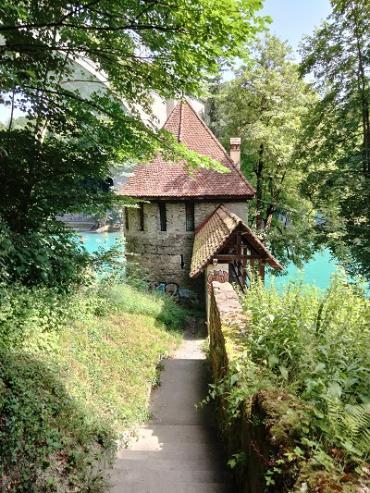 Two years ago, my wife and I became Mennonites (Anabaptist Christians), and my mother began to share some new stories.
Two years ago, my wife and I became Mennonites (Anabaptist Christians), and my mother began to share some new stories.